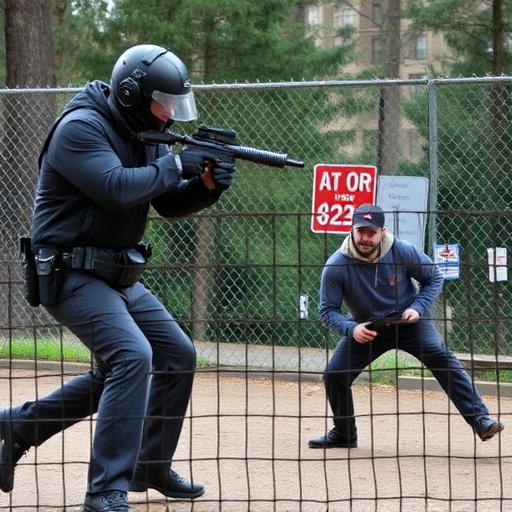Understanding electrical current flow is crucial for evaluating best concealed carry stun gun models. These devices use high voltage, low amperage currents delivered through electrodes to temporarily disable targets by disrupting body electrical activity. High-quality electrode design and materials enhance shock reliability, safety, and effectiveness, making them ideal self-defense tools. Advanced technologies like high-voltage pulses, precise current regulation, and trigger-activated controls ensure optimal performance with minimal risk.
Electrical current flow is the heart of a stun device’s effectiveness. Understanding how this flow is harnessed and controlled in best concealed carry stun guns is crucial for both optimal performance and user safety. This article delves into the intricacies of electrical current in stun devices, focusing on the models that prioritize concealed carry, to provide insights into the science behind these powerful personal defense tools.
- Understanding Electrical Current in Stun Devices
- How Stun Guns Utilize and Control Flow for Effectiveness and Safety (Focus on Best Concealed Carry Models)
Understanding Electrical Current in Stun Devices

Understanding the electrical current flow is a crucial aspect when discussing the effectiveness and operation of stun devices, especially in popular best concealed carry stun gun models. These devices utilize high-voltage, low-amperage electric current to deliver a powerful shock, temporarily incapacitating the target. The current flows through electrodes, which can be on the device’s surface or attached to probes, and disrupts the normal electrical activity of the body, leading to muscle contractions and sensory overload.
In stun guns, the electrical current is generated by a battery and controlled by a circuit board. When activated, the current passes from the positive electrode through the target and returns to the negative electrode, causing a powerful jolt. The design and quality of electrodes play a significant role in ensuring a reliable and consistent shock. Advanced models often feature specialized materials and designs that enhance current distribution, making them more effective and safer for users, especially when concealed for self-defense purposes.
How Stun Guns Utilize and Control Flow for Effectiveness and Safety (Focus on Best Concealed Carry Models)

Stun guns, designed for personal defense, rely on controlled electrical current flow to incapacitate an assailant temporarily. The most effective and best concealed carry stun gun models achieve this by employing advanced technologies that optimize both power and safety. These devices use high-voltage, low-current electrical pulses, often in the range of 100,000 to 500,000 volts, ensuring a strong enough shock to disrupt muscle control without causing severe or permanent harm.
The best concealed carry models feature smart circuit designs that enable precise current regulation. They typically incorporate safety mechanisms like trigger-activated discharge controls and automatic shutdown features after a set stun duration. These safeguards minimize the risk of accidental shocks and ensure users can deploy the device confidently in self-defense situations, making them ideal for discreetly carried personal defense tools.
Stun devices, particularly the best concealed carry stun guns, effectively utilize controlled electrical current flow to incapacitate an opponent temporarily. By understanding the fundamentals of electrical current and how modern stun guns manage its distribution, users can ensure both safety and optimal performance. The ability to conceal these powerful tools makes them valuable personal defense options for those seeking effective self-defense solutions, enhancing their peace of mind in potentially dangerous situations.
